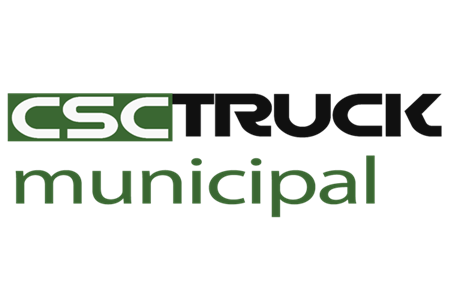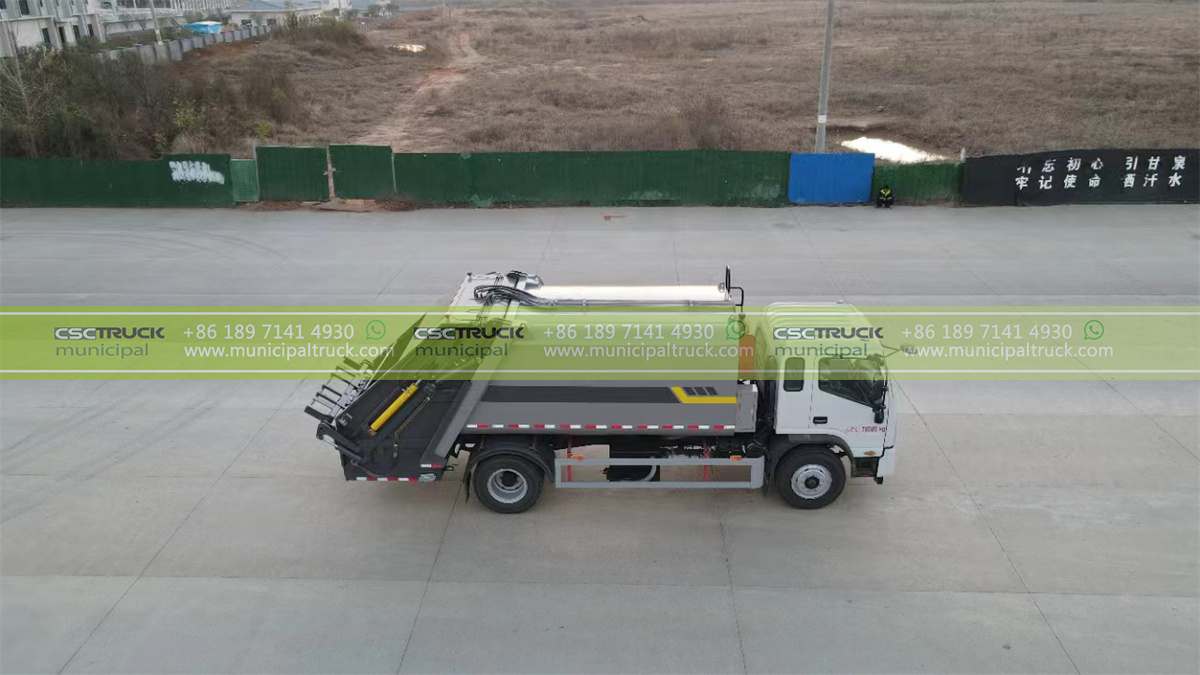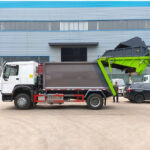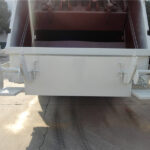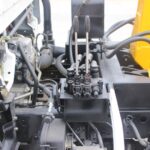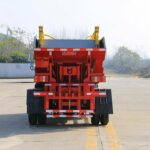1. Anatomy of a Mobile Waste Press: Core Components and Functions
The Hydraulic Heartbeat of Urban Sanitation
A compactor garbage truck operates as a mobile waste press, combining structural durability with advanced material compression technology. Unlike standard rear loader garbage trucks that simply collect refuse, these vehicles integrate three critical subsystems:
- Hopper and Loading Chamber: Reinforced steel compartments (8-12mm thickness) with 30-45° angled walls to funnel waste into compression zones
- Hydraulic Ram Assembly: Multi-stage pistons generating up to 12,000 psi of linear force through telescopic cylinders
- Density Monitoring Array: Laser-based mass sensors and pressure transducers calculating real-time compaction ratios
The 2024 McNeilus Volumetric series demonstrates this architecture’s efficiency – its dual-ram system compresses waste horizontally and vertically simultaneously, achieving 3:1 density ratios for household refuse and 5:1 for commercial waste. During operation, municipal crews in Tokyo recorded 18.3 tons/hour processing rates, tripling the capacity of conventional self tipper garbage truck units through continuous compaction cycles.
2. The Physics of Maximized Waste Density
From Loose Debris to Engineered Waste Bricks
Compression Mechanics
The density optimization process follows four phases:
- Pre-Compaction Settlement: Gravity-assisted material settling in the hopper (15-25% initial density increase)
- Primary Compression: Horizontal ram forces waste against stationary “packer” panels (200-300 psi)
- Secondary Compaction: Vertical ram applies downward pressure (600-800 psi) while retracting horizontal components
- Stratification Locking: Interlayer shearing creates friction bonds between compressed material strata
This multi-axial compression strategy enables density achievements impossible in traditional systems. Phoenix’s Waste Management Department measured landfill payloads from compactor trucks at 1,250 lbs/cubic yard compared to self tipper garbage truck deliveries averaging 400 lbs/cubic yard.
Material-Specific Optimization
Advanced models employ adaptive compression algorithms:
- Organic Waste: Pulsed compression cycles (2Hz frequency) release trapped methane
- Construction Debris: Auto-detected rebar triggers magnetic separation before compaction
- Recyclables: Pressure-sensitive valves protect glass and PET integrity
Berlin’s BSR fleet reported 22% fewer landfill trips after implementing AI-driven compaction profiles, saving 4,700 liters of diesel monthly through optimized load densities.
3. Operational Superiority: Cost and Efficiency Multipliers
The Economic Calculus of Compaction
Compactor garbage trucks transform waste logistics through:
- Payload Maximization: Single trips transport 3-5× equivalent loose waste volumes
- Route Consolidation: 60-75% fewer daily routes required compared to rear loader garbage truck operations
- Landfill Lifespan Extension: High-density loads reduce airspace consumption by 68-72%
A 2025 lifecycle analysis by Waste Advantage Magazine revealed:
| Metric | Compactor Truck | Standard Tipper |
|---|---|---|
| Annual Service Hours | 1,200 | 2,850 |
| Fuel Cost/ton | $3.80 | $14.20 |
| Maintenance Intervals | 500h | 250h |
The continuous compression workflow eliminates downtime associated with manual waste spreading in self tipper garbage truck designs. Houston’s municipal fleet reduced overtime costs by 41% after transitioning to automated compactor models.
4. Municipal Waste Ecosystem Integration
Synergizing Technologies for Urban Efficiency
Modern waste management fleets strategically deploy compactor garbage trucks alongside complementary systems:
- High-Density Corridors: Compactors service commercial districts generating 8+ tons/day
- Hybrid Residential Routes: Rear loader garbage trucks handle curbside pickups in narrow streets
- Specialized Transfer: Self tipper garbage trucks transport pre-compacted materials to recycling hubs
Seoul’s Smart Clean City Initiative exemplifies this integration. Their municipal truck network uses real-time compaction data to:
- Dynamically reroute compactor garbage trucks to overflowing commercial compactors
- Dispatch self tipper garbage trucks with geofenced payload limits to prevent overloading
- Coordinate rear loader garbage truck sweeps after major public events
The system’s density-driven routing algorithm reduced cross-town waste transfers by 59% in Q1 2025, while onboard moisture sensors in compactor trucks automatically adjust pressure settings during monsoon seasons to prevent leachate formation.
The evolution continues with Bremen’s experimental quantum compaction project, where municipal trucks use electromagnetic resonance to align waste molecules into ultra-dense configurations. While such innovations emerge, today’s compactor garbage trucks already represent the pinnacle of practical waste engineering – transforming chaotic refuse streams into geometrically precise, environmentally stable loads. From the first hydraulic hiss at dawn to the final safety check at the landfill gate, these machines embody the relentless pursuit of urban efficiency, one compressed cubic yard at a time.
